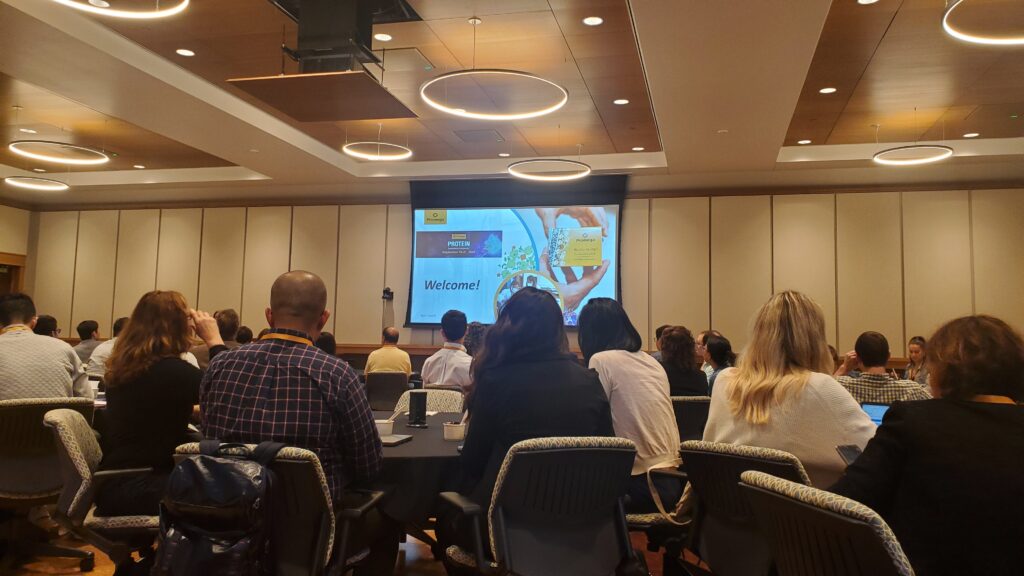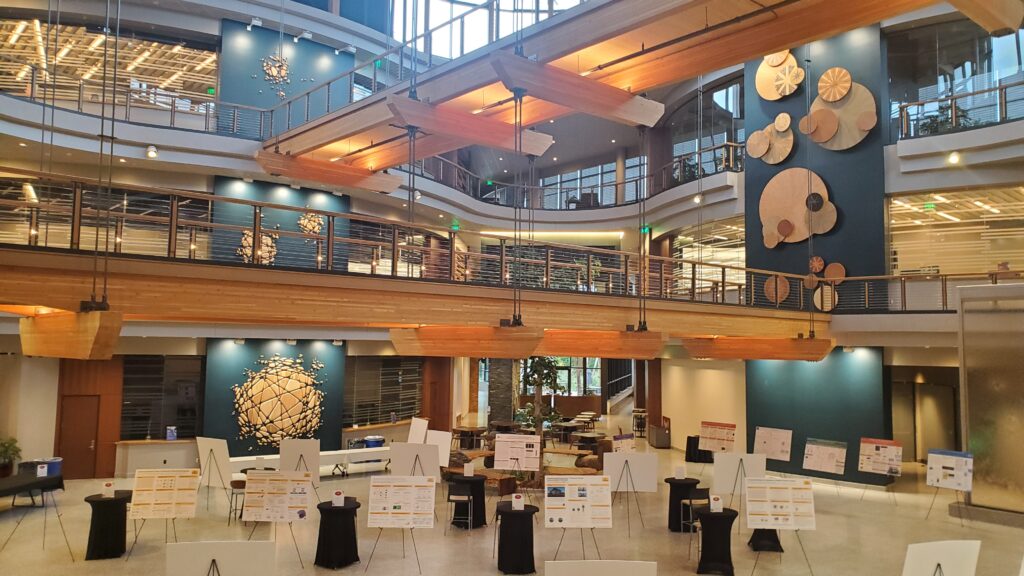In the opening remarks of our second annual Targeted Protein Degradation Symposium, Tom Livelli, VP of Life Sciences Products & Services at Promega, posed a question to the attendees: “What do you want to be able to do today that you can’t?” This aspirational question set the tone for an event where building connections to advance the study and application of proximity-induced degradation took center stage.
More than 90 attendees from academia and industry gathered September 20–21 for the two-day symposium, which was hosted in our inspirational Kornberg Center—the R&D heart of Promega. Through engaging talks, a poster session, “Learn n’ Burn” challenges and social gatherings, participants had the opportunity to reinforce existing collaborations and to connect with others who are making an impact in the field of targeted protein degradation.
New Advances for Induced Proximity
With a solid collection of PROTAC-based therapeutics currently in clinical testing, many of the talks at the symposium focused on ways to instead push for new capabilities for proximity-induced degradation.
Several talks disclosed the discovery of novel E3 ligases. Expanding the degrader toolbox beyond VHL and CRBN is an important push as there’s a risk of developing mutation-based resistance. Researchers also shared their interest in degradation platforms that don’t rely on the proteome and are more able to target extracellular and membrane-bound proteins.
Other talks discussed new ways to engage targets, such as using DNA fragments to target DNA repair enzymes for degradation. Several speakers shared their strategies for rapidly generating PROTAC and molecular glue candidate libraries for screening.

Collaboration on Display
In many of these talks, speakers pointed out collaborators who were also attending the symposium, which contributed to the symposium’s collegial mood and highlighted the breadth of expertise represented in the room.
This was reinforced during a panel on day one about the important role CROs and service providers can play in this field. Representatives from academia and industry described how they use service providers to expand their own labs’ skills and expertise. One panelist, Zoran Rankovic from St. Jude Children’s Research Hospital, noted that “there’s no more complex human endeavor than drug discovery,” and that collaboration is necessary for success in this field. Promega was highlighted by the panelists as one of the strongest service providers and collaborators in the targeted protein degradation space. Working with our Tailored R&D Solutions group was a way for them to get results in-hand much faster than if had they worked alone.
Designing Tools to Advance Targeted Protein Degradation
By far, the focus of the symposium was on the tools attendees were developing to aid in the discovery of PROTACs, molecular glues and other degrader platforms. Speakers welcomed questions and suggestions for ways their tools could help the field and be improved. Tools ran the gamut from dynamic modeling systems to rationally designed molecular glues to a proteomics platform that used a biotin-targeting chimera (BioTAC) system to build maps of proteins’ “interactomes”.

Several of our own technologies were highlighted in the talks. Kristin Riching, Senior Research Scientist at Promega, kicked off the first day’s session with a talk on developing modular tools based on HiBiT and HaloTag® technologies to study lysosomal degradation of membrane-bound and extracellular proteins.
The next day, Jim Vasta, Senior Research Scientist at Promega, described how he has used NanoBRETTM TE tools to quantitatively assess cell permeability, an important question for a class of therapeutics that rarely appear to be “drug-like” due to their relatively large size.
Martin Schwalm, a graduate researcher at SGC Frankfurt, also described his work developing NanoBRETTM assays to measure the kinetics of PROTAC ternary complex formation as an alternative to screening degrader activity.
As PROTACs and other degraders start to move through the drug development pipeline, it’s important to also think about what tools are needed in that setting. Brandon Jeffy, Director of Drug Safety Research and Evaluation at Takeda, gave a fascinating talk on ways to “de-risk” targeted protein degraders in the discovery phase of drug development. He noted that improved safety will be key to getting degraders that can be used outside of oncology applications, but in a field that is so rapidly evolving, deciding what tests and assays and results can be used to determine if a degrader is “safe” is a complex challenge.

Targeted Protein Degradation with Promega
At Promega, we’re all in when it comes to creating the tools and connections needed to move targeted protein degradation forward. We’re proud to have created so many enabling tools for researchers in this field and we look forward to seeing how the connections forged at this year’s Targeted Protein Degradation Symposium make an impact.
To learn more about our tools and targeted protein degradation at Promega, check out these resources:
- Key Questions to Consider When Developing Protein Degraders
- Inside the First Promega Targeted Protein Degradation Symposium
- Directed Targeted Protein Degradation with Pre-Built HiBiT Cell Lines
- Ask the Experts: Practical Guidance for Designing Successful Targeted Protein Degradation Assays
Related Posts
Latest posts by Jordan Nutting (see all)
- The Central Dogma of Promega: The Story and Science Behind Our Kit Packaging Design - May 7, 2024
- Silencing the Immunogenicity of AAV Vectors - April 4, 2024
- Discovering Cyclic Peptides with a “One-Pot” Synthesis and Screening Method - February 29, 2024
